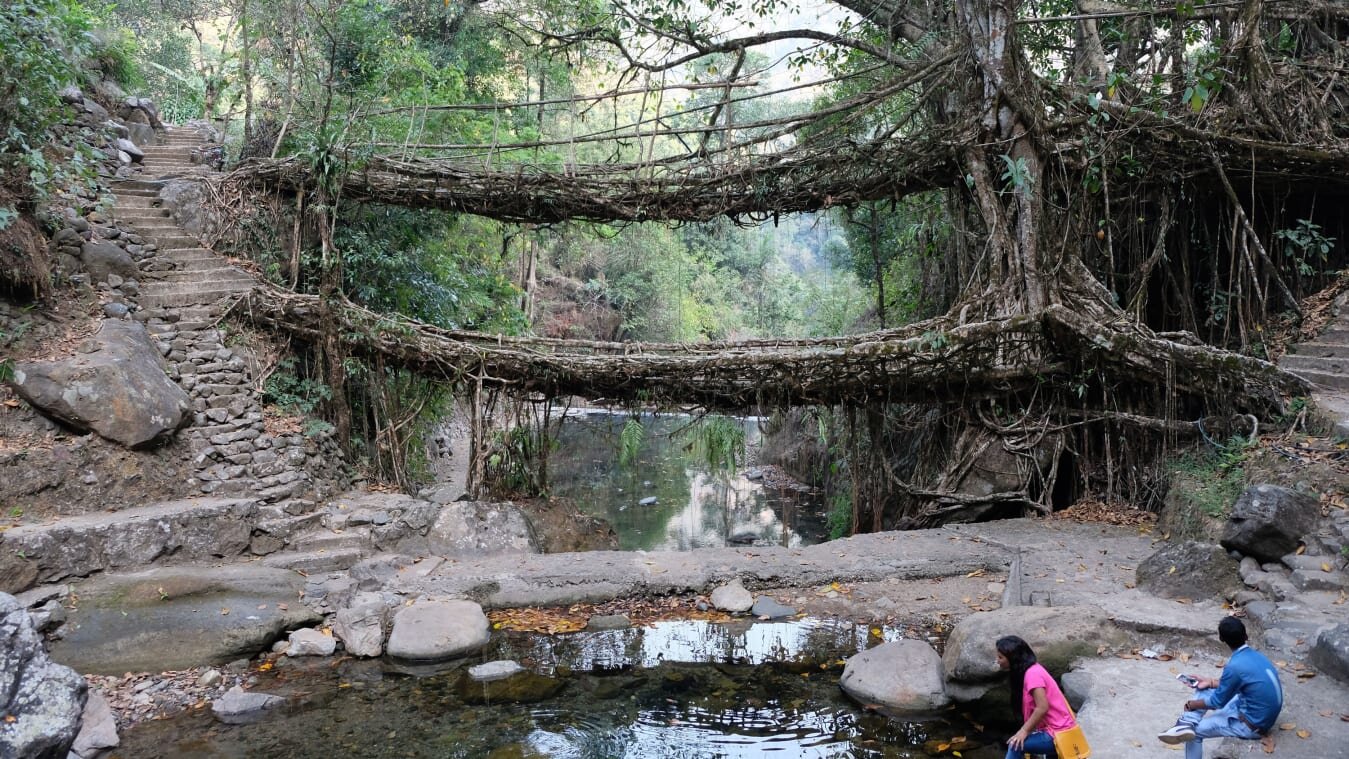Important Facts For Prelims
Living Root Bridges
- 23 Nov 2019
- 2 min read
Why in News
According to a study recently published in the journal Scientific Reports, the living root bridges (found in Meghalaya) can be considered as a reference point for future botanical architecture projects in urban contexts.
Root Bridge
- Living root bridges (also known as Jing Kieng Jri) are the aerial bridges that are built by weaving and manipulating the roots of the Indian rubber tree.
- A root bridge uses traditional tribal knowledge to train the roots of the Indian rubber tree (found in abundance in the area) to grow laterally across a stream bed resulting in a living bridge of roots.
- It spans between 15 and 250 feet and is built over centuries.
- They have been serving as connectors for generations in the Indian state of Meghalaya.
- The bridges are primarily a means to cross streams and rivers. They have also become world-famous tourist attractions. The two most popular tourist spots are- Riwai Root Bridge and Umshiang Double Decker Bridge.
- They have three main properties:
- They are elastic,
- The roots easily combine, and
- The plants grow in rough and rocky soils.





